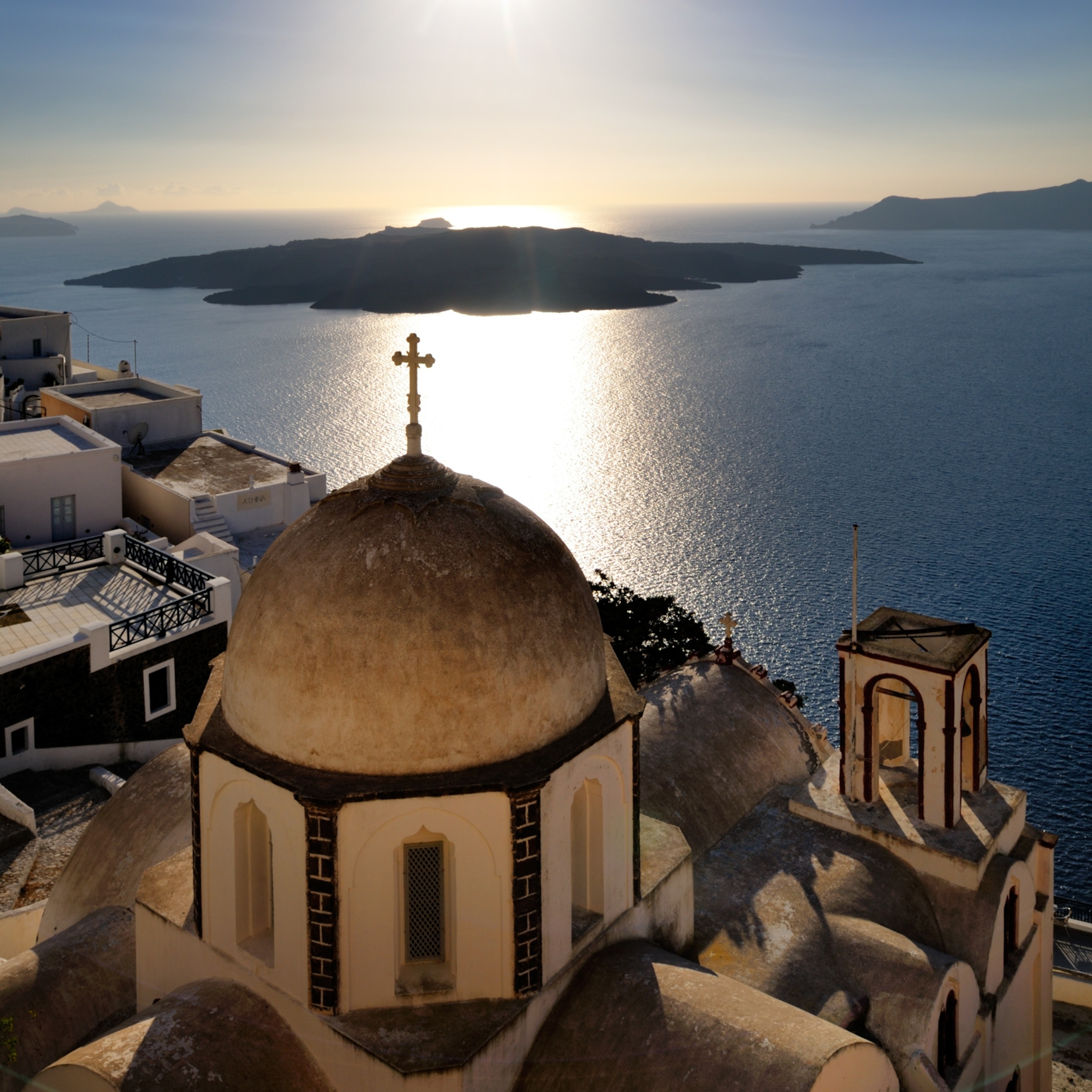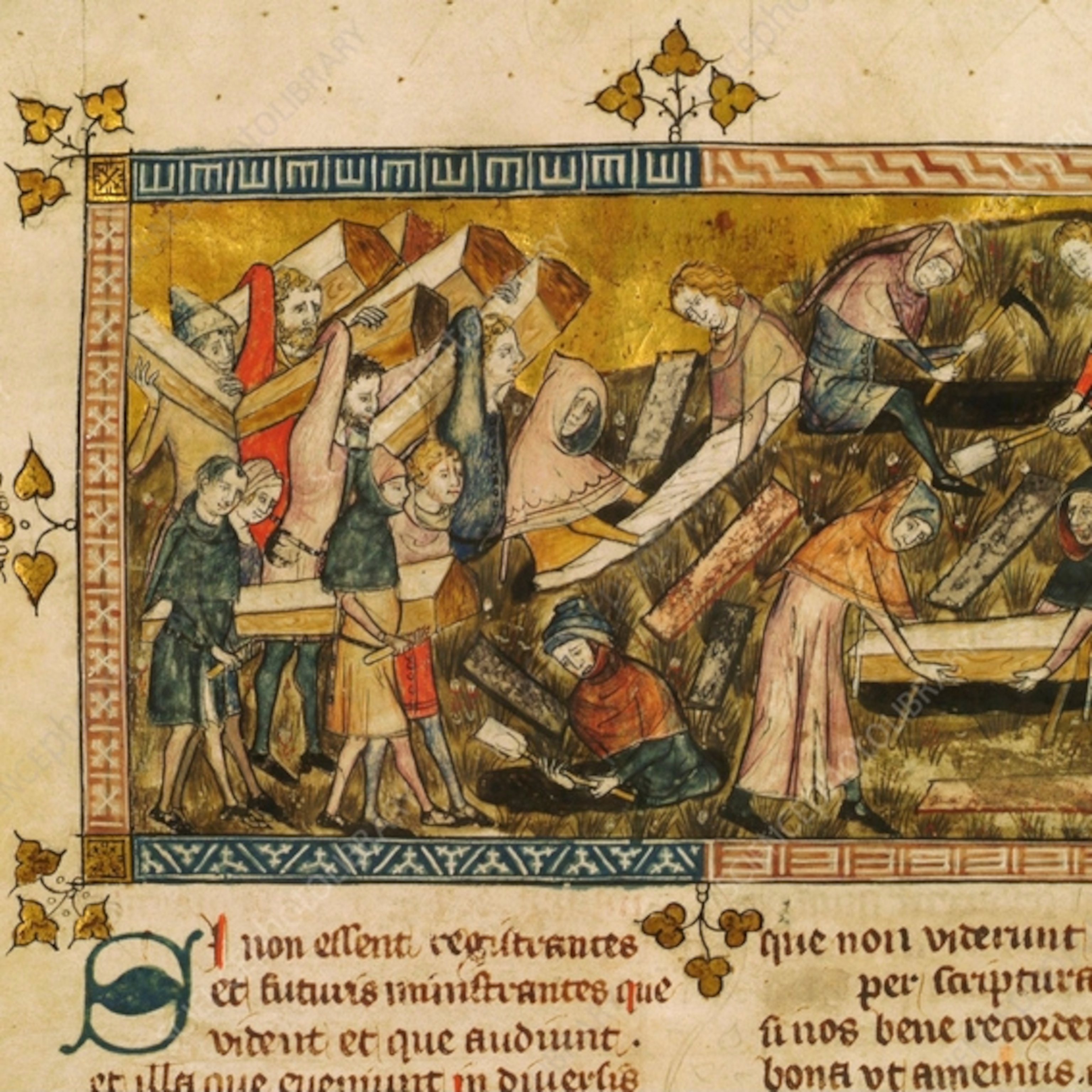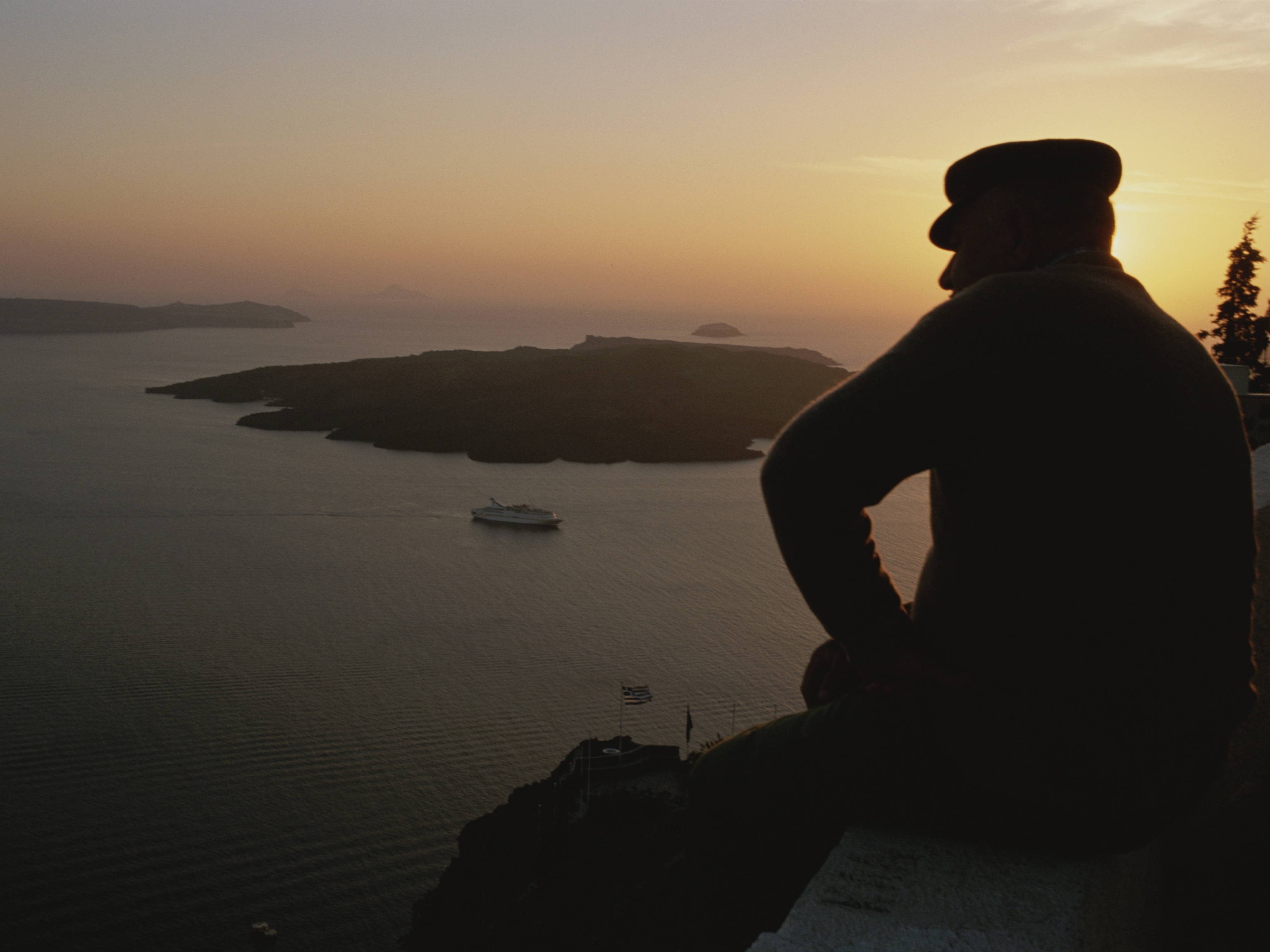Scientist Models Deadly Volcano Eruptions With Harmless Baby Powder
The Smithsonian’s Benjamin Andrews also uses lasers in his lab’s “tank.”
Benjamin Andrews studies the destructive power of volcanoes, traveling to faraway locales like Hawaii, Guatemala, and Russia to observe what he calls the planet's "awesome" power firsthand.
"You can feel the heat on your face," he says. "You can feel yourself being roasted, so you don't want to get too close."
But he spends more time studying volcano flow patterns from the safety of his lab in suburban Maryland, with the help of a little baby powder. It turns out that the white stuff mimics the behavior of potentially lethal forces surprisingly well.
A volcanologist with the Smithsonian's National Museum of Natural History, Andrews is part of the global scientific effort to better understand volcanoes, largely to reduce their destructive impact.
"Huge portions of the world are threatened by volcanoes," he says. Andrews hopes that by modeling eruptions, people will have a better idea of how far away, and in what location, they need to be in order to stay safe. He has several scientific papers in the works for publication in coming months but gave National Geographic a preview of his recent findings.
Shutting Down a Hemisphere
The world is home to roughly 1,500 active volcanoes, of which about 50 erupt in any given year, resulting in an average of nearly 900 deaths a year and millions of dollars in damage.
Volcanoes often spew ash that interferes with airplane travel. When the Eyjafjallajokull volcano in Iceland erupted in spring 2010, airplanes were grounded in 18 countries and more than 100,000 travelers inconvenienced.
"That was a small eruption," says Andrews, referring to the scale of geologic activity.
A larger volcanic explosion, such as that released by Mount Pinatubo in the Philippines in 1991, can release ash into the stratosphere, which Andrews says "could easily shut down aviation in an entire hemisphere."
Volcanic explosions can also affect the climate, releasing greenhouse gases that contribute to global warming but also releasing ash that can block out the sun, resulting in a cooler climate. Which effect dominates depends on the year.
The eruption of Mount Tambora in Indonesia in 1815 produced so much ash that it blocked out much of the sun and caused a "volcanic winter" in North America, killing crops and causing starvation.
Modeling Pyroclastic Flows
To better understand volcanoes, Andrews focuses on eruptions called pyroclastic flows—hot, dense clouds of material that blast out of a crater at high speeds. Though many people think of lava when they think of volcanoes, it is the explosive power of pyroclastic flows that are typically more dangerous.
Lava tends to pour out more slowly, in gradual eruptions that people can often get away from.
Pyroclastic flows, by contrast, tend to shoot out violently and can be 1,000 feet (300 meters) thick. These flows can come careening down mountains at speeds up to 450 miles (700 kilometers) per hour, leveling forests, buildings, and anything else in their way.
Pyroclastic flows are a mix of gas, ash, fine particles, and blocks of pumice that can be as large as basketballs, all at temperatures up to 1,830°F (1,000°C). It was one such flow that flattened vegetation and buildings over 230 square miles (600 square kilometers) during the Mount St. Helens eruption in Washington State in 1980, which left 57 people dead.
"Pyroclastic flows might look like fluffy clouds [from a distance], but they are more like sandblasting," says Andrews.
Studying those flows on real volcanoes is difficult because they're so dangerous and can spread out over wide distances.
The flows are also so dense that it's impossible to see very far into them. In the past few decades, some people have begun recording pyroclastic flows in photos and on video, but the events are hard to predict and panicked witnesses might not have time to reach for their cameras.
All of which helps to explain why, last spring, Andrews built a volcanology simulator in a Smithsonian lab in Suitland, Maryland.
Inside the Tank
Drawing on experiments he'd worked on at the University of California, Berkeley, and elsewhere, Andrews designed what he affectionately calls "the tank": several large tiles of wooden stage floor enclosed with plastic sheeting.
The size of the tank allows him to model bigger, more complex, and, he hopes, more lifelike flows. It measures 28 feet (8.5 meters) long and 20 feet (6 meters) across, with an interior height of 8.5 feet (2.6 meters).
To run an experiment, Andrews dons a mask to avoid inhaling the fine particles he experiments with. Then, as on one recent day, he carefully measured out powder from a large barrel on the floor, weighing it on an electronic scale.
Next, he climbed up a metal staircase to the top of the tank, where he spread the powder out on a tray connected to a conveyor belt.
Andrews prefers talc powder, or magnesium silicate, because it is so soft it doesn't scratch surfaces and shows up great in laser light. He buys the stuff in large containers and calls it "industrial grade," but it's the same as the primary ingredient in ordinary baby powder.
When Andrews wants to see how changing the particle size of his powder affects the behavior of the flows, he uses crushed walnut shells or tiny glass beads. That gives him a sense of how different rock types might behave in the real world.
Before running a test, Andrews turns on three lasers inside the tank to provide precise illumination. He also flicks on a bank of seven cameras, including a high-speed model that shoots 3,000 frames per second.
Then Andrews punches a remote control, which turns on the conveyor belt, pushing the talc powder down into the tank, a drop of about 8 feet (2.4 meters).
As it hits the tank floor, dust clouds slowly rise toward the roof of the enclosure.
The dust currents are clearly visible in the laser light, and Andrews points out their curling shapes, which he says mimic the behavior of pyroclastic flows erupting from a volcano cone.
After an experimental run, which takes just a few minutes—the amount of time it takes dust to settle—Andrews analyzes the footage from the bank of cameras and data from temperature sensors embedded throughout the tank.
He uses this information to construct three-dimensional models of simulated pyroclastic flows, which he says will be invaluable to authorities who want to predict how a real volcano will erupt. It might help them decide if structures need to be moved, for example, or whether they will be protected by a mountain ridge.
To better simulate how certain currents behave, depending on properties like temperature or density, Andrews will heat powder in a toaster oven before loading it onto the conveyor belt.
"By knowing the mass, density, and temperature, we can control the rate of eruption," he says.
Surprising Results
Andrews also hopes to better understand how pyroclastic flows spread and interact with obstacles, such as mountain ridges or valleys, so people living near volcanoes can better plan for eruptions. So he places small barriers on the tank floor to mimic the impact of such topography.
And Andrews is trying to understand what causes pyroclastic flows to rise into giant plumes, which can reach a height of tens of thousands of feet. This could one day help airplanes better avoid those dangerous clouds of dust.
He has been surprised at the ways cold and hot plumes behave differently inside his tank.
Cold plumes tend to spread out radially, like ripples in a pond after a stone is tossed in. Hot plumes start radially, but then spread into longer, thinner masses like fingers. "I think the upward movement of the warm air prevents spreading to the sides," he says.
Similarly, when a warm current hits a barrier, most of the flow tends to form a plume that rises up, while not much material passes over the barrier, says Andrews. A colder current will tend to flow over the barrier.
In the future, Andrews hopes to use his model to better understand how currents deposit dust. That will be helpful in working backward from rock deposits to map out past pyroclastic flows, from eruptions that happened long ago.
Building on Other Work
Andrews isn't the first scientist to model volcano eruptions in the lab.
Scientists have been using various models for decades, looking at everything from gentle flows to explosive ejections. Some researchers even use sophisticated pressure vessels to simulate conditions inside magma chambers. The work has helped scientists better predict when volcanoes will erupt, and with what ferocity.
Researchers at New Zealand's Massey University run larger experiments than Andrews does, using sand and even small pebbles, and are particularly interested in modeling the basal, or lower, part of pyroclastic flows.
Olivier Roche of France's Université Blaise Pascal, Clermont-Ferrand, uses glass beads of a grain size around 100 microns to simulate dense pyroclastic flows and to model the collapse of calderas.
Roche calls Andrews's work "significant," and says the biggest challenge to such experiments "is to estimate the degree of similarity with the natural systems."
"The aim is to understand the basic physical processes in order to establish reliable numerical models that can be used to simulate natural flows," he says, "which is particularly relevant in the context of hazards assessment."








